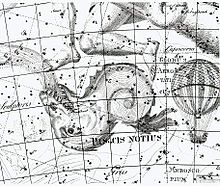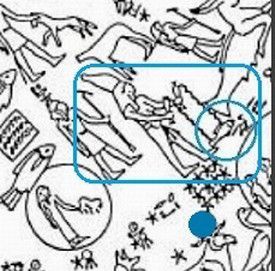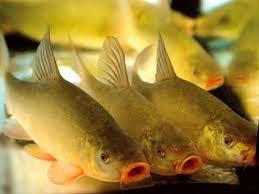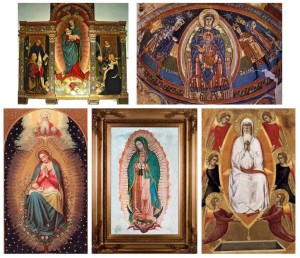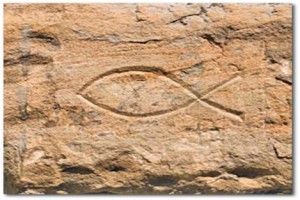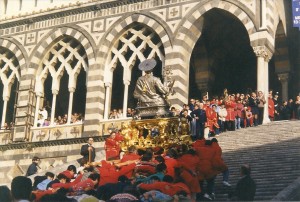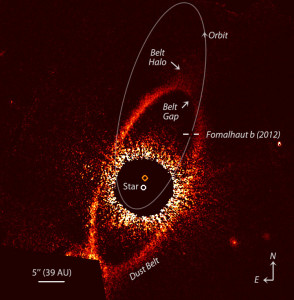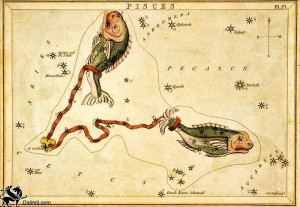The ancient Egyptian symbologies of the principle of life on Earth seen through the historical-religious evolution of the astrological meanings of the constellations of the Austral Fish: the star of the Annunciation of Jesus Christ, Fomalhaut, t the Fish Mouth and its connections with Saint Andrew and the zodiac sign of Pisces.
The very first mythology to refer to in order to understand the astrological meanings of the stars is Egyptian and, in our case, that relating to the southern hemisphere to which the ancient iconography relating to the origin of life on Earth is connected, seen as a great river that flows from the abyss called the Lake of the Great Fish. In ancient times the most complete uranographs were the Egyptian ones because they also reported the southernmost stars compared to the Babylonian ones based on astronomical observatories located at more northern latitudes.
The Southern Fish is depicted as the bearer of water, understood as the water of life or of Horus, the fish from the abyss, which also has a dark counterpart, Ketos, a destructive female. This duality is represented in different ways: crocodile and dudong, two cows, two women or the goddess Omoroca or Tamiat, cut in two by Belos.
On ancient celestial maps we find a current of water that flows from the Mouth of the Southern Fish, giving the impression that it is swimming towards the constellation of Aquarius on the ecliptic. In fact, it has always been assumed that the celestial water flows downwards from the north celestial pole towards the southern abyss and that it is poured from the Aquarian amphora into the Southern Fish Mouth. In addition, the Eridanus river that originates from the star Rigel at the foot of Orion and flows at the star Achernar, would follow a course from north to south, or from left to right of the celestial sphere.
The life of the world born of water and imagined as Ichthys, the Fish, is represented and emitted by the Southern Fish Mouth as a “word” which becomes “written” according to what is said in the Hymn to Merodach; in any case it is released from the Mouth of the Abyss, which belongs to the Mother-Fish or the Mouth of the Fish.
The mystical symbol known as “vesica piscis” has the shape of the mouth of a fish, considered as the extreme limit of entry to life. By extension the term has been assimilated to the uterine form, as a “derivative” type, but the prototype is the mouth of the fish that gave birth to the world’s water of life and the savior who came to Egypt through the water in the form of fish of the flood. Proof of this is that in the obstetric language, the extreme limit of passage to life is called Mouth of tench.. Therefore it must be considered that the Fish Mouth is the primordial source of life, which has become by extension the uterus.
In theological development the geometric and anatomical figures were mixed in the vesica as a symbol of the womb. This was not the case when the Great Mother of Life from the water was imagined in the Southern Fish. She becomes a uterus, to all intents and purposes, when the door of life is depicted in the shape of a vesica at the female (or western) end of a Christian church.
The Fish Mouth was recognized in Heaven as the primordial gateway to life, at the time when the vital soul came into the world through water. Although the true meaning is hidden by the doctrine, in the symbols it survives just enough to show that the son Christ in the arms of the Virgin surrounded by the vesica piscis has the same meaning that had the figure in the planisphere where the water of life gushes from the Fish Mouth, and the star of the Annunciation is Fomalhaut, whose Arabic name means Mouth of the Fish or the Whale. The Water of Life in Egypt is still represented by Ichthys the Fish, but is then personalized in Christian iconography by the child as a symbol of eternal youth. While the oval is the symbol of the archetype “the Fish Mouth”, the Virgin and Child are the equivalent made in later times that symbolizes the Divine Mother who protrudes her fish into the lake, the pool, the basin or whatever water type of the primeval abyss, as depicted in astronomical mythology. Vesica survives in Freemasonry and also in the Christian Church, which was founded on the fish and spring in Rome.
The specific attributes of the apostle Andrew are a fish or two fish, threaded into a hook that the saint holds in his hand or placed at his feet, together with the fishing net. The cult of the saint, confirmed by the hagiographic narratives and by most of the places of veneration, is linked to the islands, the coasts of the sea, the waters and aquatic beings. The same characteristics of the saint are found in a much older cult of pre-Christian origin, the Greek god Poseidon’s cult. The saint is in fact the Christian successor of the Greek god of the seas, an ancient cult handed down in the new Christian faith. For example, Saint Andrew and Poseidon are both depicted together with a fish or a dolphin. Poseidon is often seen represented driving his chariot pulled by seahorses, surrounded by fish, dolphins and other marine creatures. Master of the sea, it is said that he could trigger tidal waves and earthquakes by hammering the seabed with his trident, which was the weapon used by tuna fishermen, one of the animals sacred to the god.
The saint, therefore, with a psychopump nature connected to cosmic waters, symbolizes the transition between the past autumn and the winter that is to come. The night between 29 and 30 November is considered a magical night, a timeless space between the material and spiritual world where you can ask spirits and ancestors for a glimpse into the future through divinatory rites. On an astrological level, the star connected to Saint Andrew, and even before that to the ancient sea deities, was Fomalhaut. Located in the constellation of the Southern Fish, between 4000 and 2000 BC, it was considered by the ancients to be a royal star and guardian of the Winter Solstice.
It is the brightest star among the southern stars, one of the four fixed points of the Sun’s path at the time. According to some astrologers, the star has a Jovian-Saturnian nature, bearer of the astrological influence of the constellation where it resides. The constellation of the Southern Fish was considered by Eratosthenes as the Great Celestial Fish, where Fomalhaut, from the Arabic Fom al-ḥūt which means “mouth of the fish”, is depicted in the act of drinking the water flowing from the jug of the Aquarius. . In the times following the Egyptians, the astral influence coming from the star Fomalhaut, as we know the symbol of the entrance to life, manifested itself on the terrestrial level in various expressions of nature, such as the fish and the dolphin: these totemic animals were subsequently anthropomorphized by the inhabitants of the maritime territories in divinities such as Poseidon, Neptune and Berobreo. Finally, with the arrival of Christianity, Saint Andrew became the descendant of the previous divinities of water, death and the afterlife, a divine and hidden expression of the zodiac sign of Pisces in which Fomalhaut is located at 334 ° ecliptic longitude.
In Fengshui, great importance is given to the point where the water flows; in the gardens the direction and intensity of the jet is designed with great care, and finally its path and the loops that impart the most propitious Qi to the water. The geometric shape of the vesica piscis aligns very well with the indications of Fengshui and allows the water to flow harmoniously, spreading the beneficial Qi everywhere.
Text elaborated from the writings:
Ancient Egypt Light Of The World 2 Vol set by Gerald Massey
Sant’Andrea the winter door by Hasan Andrea Abou Saida (https://www.antrodithoth.com)
